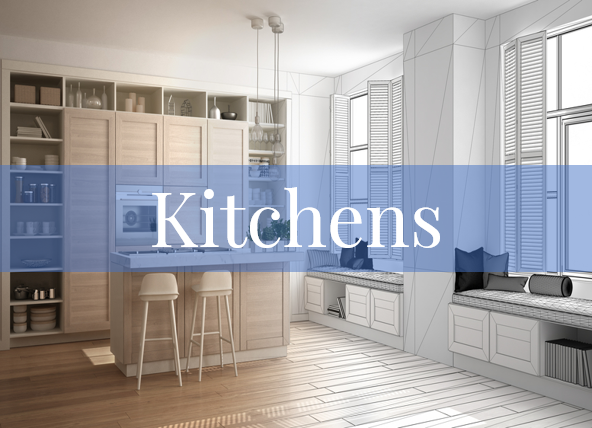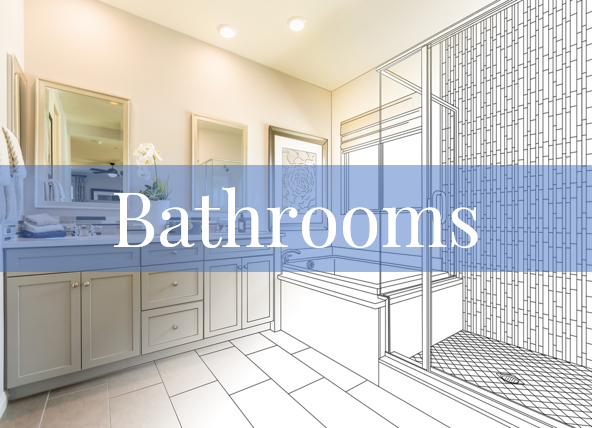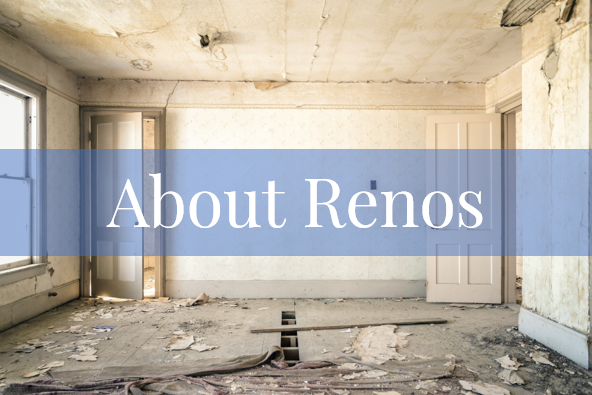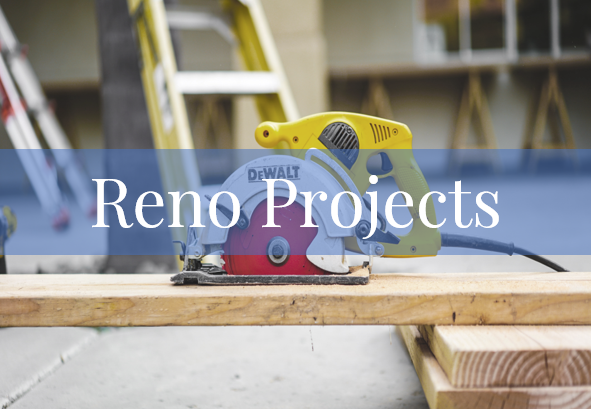Your Guide to Aging in Place
/As many of our clients are 50+, there is an important question we always ask when we meet for the first time to discuss a new project: "How long do you plan to stay in your home?"
This is an important question for us because, as people age, they often plan to downsize into smaller homes, move out of single-family dwellings and move into condominiums or apartments, or move to a different city, province, or country to be closer to other family members. However, we also need to consider whether they might be experiencing issues that might take them to a retirement home sooner rather than later.
The answer to the question of how long they plan to stay in their home often dictates the type of renovation we do. The most common response we get to this question is,
I want to stay in this home as long as possible!
Homeowners aged 50+ want to stay in their homes (in their words) until they are carried out. As we age, our needs change, and we need to prepare our homes for that. Although we may not suffer from arthritis or any mobility challenges at this time, there are some simple things you can do to ensure you can age in place.
Prefer to listen?
What Exactly Is Aging in Place?
By definition, aging in place is the ability to live in one’s own home and community safely, independently, and comfortably, regardless of age, income, or ability.
Why Age in Place?
1. Aging in place improves our quality of life, which in turn improves our physical and mental health. By staying in our own homes, where we feel secure and comfortable in a space we have made our own, our quality of life is naturally better.
2. There are lots of bacterial and viral risks in retirement homes, so by aging in place, you are kept away from those risks.
3. Aging in place reduces the chances of serious illness resulting from exposure to risks in retirement homes.
4. You can enjoy the sense of independence and comfort that only your home provides.
5. There are lots of services available to help when complete independence is not possible. Agencies that can do your housework for you, Personal Support Workers (PSW) who can help with just about any aspect of living at home, meal delivery services that deliver home-cooked meals, and so much more can be done to help with aging in place.
6. Aging in place allows you to control your routine, activities, and life decisions.
7. You can maintain a sense of dignity by aging in place.
8. Staying at home allows you to be in a familiar setting.
9. There is a strong emotional value to aging in place and staying at home.
10. By aging in place, you will live in a space that doesn’t just act as a home but actually feels like home. Home-sick seniors are at a higher risk of stress and depression, which can accelerate physical and cognitive decline.
11. The cost of living at home is generally cheaper than the expense of living in assisted living residences.
What Type of Projects Can Be Done to Help You Age in Place
For older adults, the ability to stay in their own homes as they age is paramount. Successfully aging in place, however, requires careful planning for security and safety issues that may otherwise impact their ability to remain at home. Here are some projects that we recommend:
1. Converting Your Tub to a Walk-in Shower When stepping up and into a bathtub becomes a struggle, you’ll be glad to be able to just walk right into your shower. In particular, our clients who have had hip or knee replacements find walk-in showers a godsend. For more information, read our blog Pros and Cons of Converting your Tub to a Walk in Shower.
2. Grab Bars These can be installed wherever you might need a little extra support. The shower is essential, even if you don’t have any mobility issues right now. Even if you’re in your 30s, you could easily slip on a wet shower base, and having a grab bar in the shower would ensure your safety. But grab bars are also useful in other areas, such as outside near your entrance door, to help with that little step getting inside your home. Be creative! Grab bars aren’t just for showers and tubs.
3. Widening Doorways If you’re renovating a bedroom or bathroom, consider widening the doorway if it’s less than 30". Ideally, doorways should be 36" wide to be wheelchair accessible, but even if they are 32-34" you can usually fit a walker through them.
4. Low-Profile Flooring Although it's plush and comfortable, high-pile, thick carpet can be dangerous to manoeuvre. Consider low-pile carpets or luxury vinyl plank flooring when it’s time to replace your flooring.
5. Lever Handles Replace round knobs with lever handles to make opening doors so much easier, even while carrying a full bag of groceries.
6. Lever or Smart Faucets Lever-handled faucets are usually much easier to handle than the old-style handles. Smart faucets, or motion-activated faucets, are a great option, allowing you to just wave your hand to turn the faucet on or off.
7. Zero Clearance Showers These are showers that have no curb or sill. The floor of the shower is the same level as the floor of the bathroom. Not only are these very modern-looking, but there are no restrictions, so a walker or wheelchair can easily slide in.
8. Safety Lighting As we age, our vision becomes worse, so installing lighting at knee height or lower on stairways and halls can aid with nighttime walks.
9. Security Systems Feeling safe at home is critical at any age, and installing a security system can minimize the risks, particularly with the increased prevalence of scam artists going door-to-door and preying on seniors.
10. Finishing In-Law Suites in Basements We often get asked to finish basements for clients and install full bathrooms and kitchens in the basement so their parents can live independently while having the security of knowing family is close by.
11. Move Laundry Facilities to the Main Floor or Second Floor By minimizing having to carry laundry to the basement, it makes aging in place much easier. For information on the pros and cons of laundry room placement, read our blog, Is it Time to Renovate Your Laundry Room?
12. Remove Walls To increase floor space, you can remove walls, which will not only open up your space but also make manoeuvring with walkers or wheel chairs much easier.
13. Drawers in Kitchen Cabinets Base cabinets in kitchens can be awkward to access when you have to reach into the back of them. Installing drawers or pull-outs is an efficient way to access items in base cabinets without having to kneel down to get to items in the back of the cabinet.
14. Rocker Switches Replacing the old-style toggle switches with rocker switches is an easy and inexpensive way to make turning lights on and off much easier.
15. Smoke/CO2/Strobe Detectors With the new building code requirements, smoke detectors now require strobe lights that go off, alerting you to danger. As we age, hearing impairments can make safety in our homes an issue. Strobe lights will alert you to smoke or CO2 in your home.
16. Motion Sensor Lighting It’s very simple to install motion sensor lighting in your home so that the lights turn on when you enter a room and off after you have left. It’s critical at any age to have adequate lighting outside, and motion sensor lighting is a great option to have at your front and rear entrances. Also consider lighted switches so you can easily find the switches in the dark.
17. Replace Cabinet Knobs With Pulls Grabbing small knobs can be difficult when you have arthritis, so replacing your hardware on your kitchen cabinets with wide pulls can solve the problem.
18. Have a Bedroom on the Main Floor Turning an office or den into a bedroom can help as we age and can no longer manoeuvre stairs as easily.
19. Comfort-Height Toilets These can be appreciated by anyone at any age. By having a taller toilet, it makes it easier to stand up from a seated position.
20. Induction Cooktop The advantage of this type of cooktop is that it can’t accidentally be left on. It only works when the correct pots and pans are on the elements.
There are many other ideas that can be put into place as we age. Remaining at home in a place we are comfortable in and feel secure in is so vitally important. Consider making some of these changes the next time you are renovating to ensure that you can age in place.




























